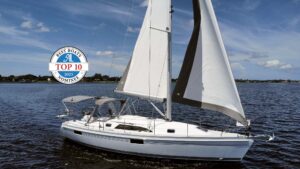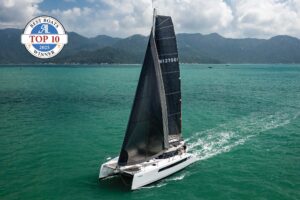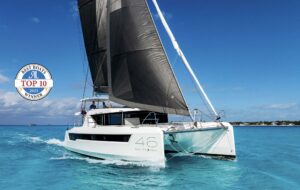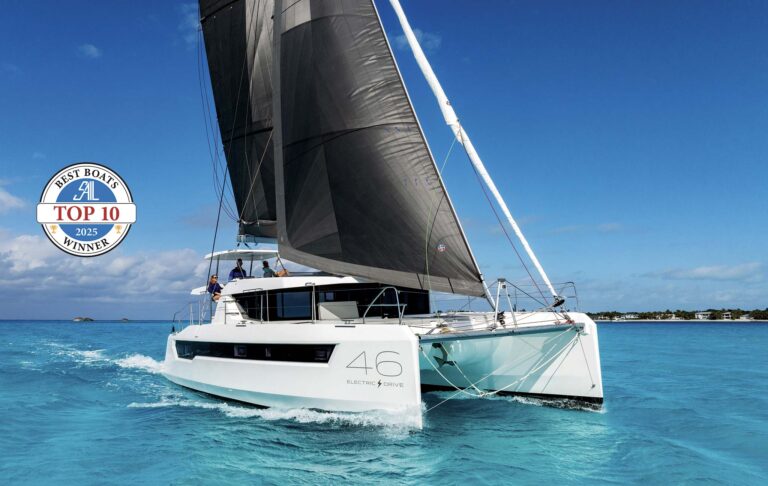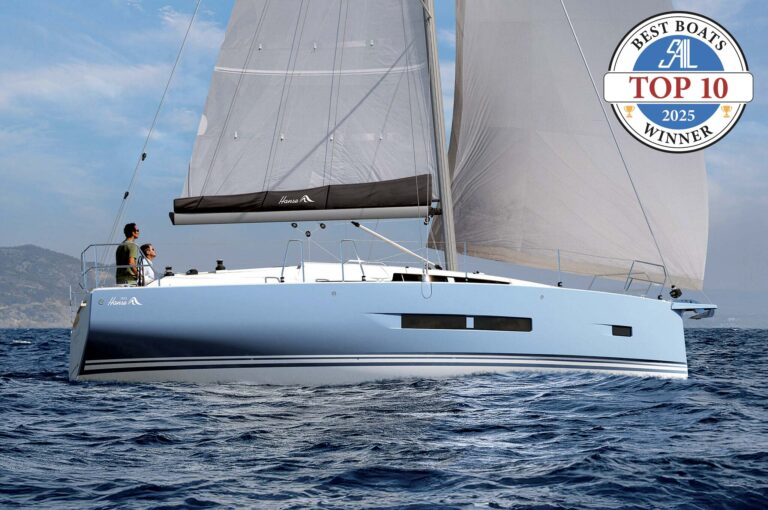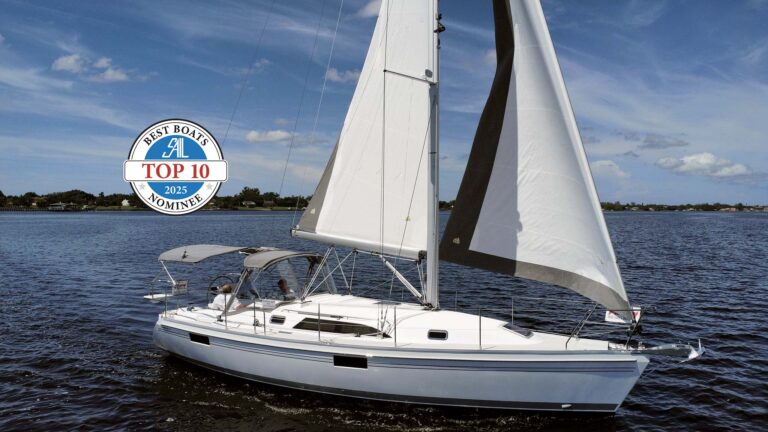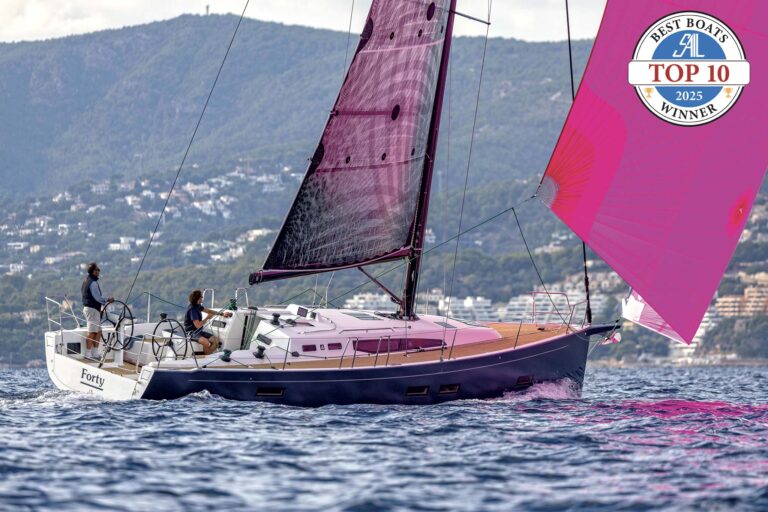
If we sailors were to be dead honest, daysailing is what we do most of the time. It, therefore, makes sense to own a boat that’s designed and built for just that sort of use. While you’re at it, why not make it a boat that blends excellent all-round performance with extreme good looks—a boat like the Saffier Se 33, perhaps.
The name may not be a familiar one to American sailors, but it’s well known in Europe. Saffier Yachts produces a range of daysailers and weekenders ranging from 23 to 37ft. It’s a family business, run by brothers Dennis and Dean Hennevanger, and the boats are designed in-house and built in IJmuiden, on the Dutch coast. They follow the Euro aesthetic of classic lines with a modern twist above the waterline, and a minimum of wetted area below, with efficient foils and ballast slung low in bulb or torpedo keels.
Over the years Saffier’s designs have gained a reputation for not just good looks and first-class build quality, but for excellent seakeeping: the notoriously rough and fickle waters of the North Sea are a tough test bed. Until its big sister, the Se 37, was launched last year, the Se 33 was Saffier’s largest yacht, and I was delighted to be invited to sail the first example to be imported into North America, the day after it was launched in New York Harbor.
First impressions are important, and mine were of a finely crafted gem of a yacht, distinctive in appearance, moderate in proportion, sweet of line and beautifully finished. The boat is set up for easy singlehanding, with the mainsail contained by lazyjacks, the self-tacking furling headsail controlled by a single sheet and the Code 0 set on a furler at the tip of a bowsprit. Sail controls are led aft via under-deck galleries to clutches and Harken winches by the twin helms.
Belowdecks, there’s crouching headroom in a compact interior that can sleep two comfortably, four if they’re related or on the small side. A toilet is tucked away beneath the V-berth. A small galley sink and an electric Isotherm fridge are the only mod cons, though you can have a small stove if you wish.
That said, I don’t see this boat being used for more than an occasional night or two afloat. Its forte will be administering undiluted doses of sailing joy to its owner, either alone or with company—lots of it, since the cockpit is huge and well laid out, with a large lounging area abaft the helms and benches that are more than long enough to sleep on.
With the boat’s builder and owner aboard we unrolled the big red Code 0 and soon were slipping downriver at 6-7 knots in the light breeze. It was immediately apparent that I was at the reins of a thoroughbred; she felt eager to go, with noticeable acceleration in the slight puffs. In a YouTube video, you can also find footage of the boat surfing downwind at nearly 20 knots. The Jefa steering was light and responsive, and the boat answered instantly to course corrections without the twitchiness you get with some high-performance boats.
Furling the Code 0 and unrolling the self-tacking jib, we tacked effortlessly upriver. The current meant it wasn’t possible to gauge tacking angles, but I am sure no one will complain about the Se 33’s windward ability. Alas, our test was cut short when we ran afoul of a shoal on a falling tide, and then stuck there. No worries, though, as an unperturbed Dennis Hennevanger (no stranger to running aground in the shallow waters of the Netherlands) seized the opportunity to describe the toughness of the boat; how the hull consists of an isophthalic resin-infused, vacuum-bagged sandwich of woven rovings and closed-cell foam, reverting to solid glass below the waterline, where the laminate is nearly an inch thick around the keel. Glassed-in floors bracketing the keel stub add even more strength.
A couple of hours later we sailed her off the shoal, with only a few scratches on the torpedo keel to testify to our embarrassment. It wasn’t the Se 33’s sturdiness, though, that I was thinking about as I drove home later that evening; it was the silky-smooth handling of a boat that epitomizes the daysailer ethos.

Specifications
LOA 33ft LWL 27ft 10in Beam 8ft 11in
Draft 4ft 9in (std); 6ft 10in (race)
Displacement 6,172lb (light ship)
Ballast 2,425lb (std); 2,204lb (race)
Sail area 527ft
Fuel/water (GAL) 12/21
Engine 15hp Yanmar with saildrive
Ballast ratio 41 SA/D ratio 23 D/L ratio 121
What do these ratios mean? Visit sailmagazine.com/ratios
Designer Saffier Yachts
Builder Saffier Yachts, IJmuiden, Netherlands, saffieryachts.com
Price $162,400 (base boat) at time of publication
April 2018

